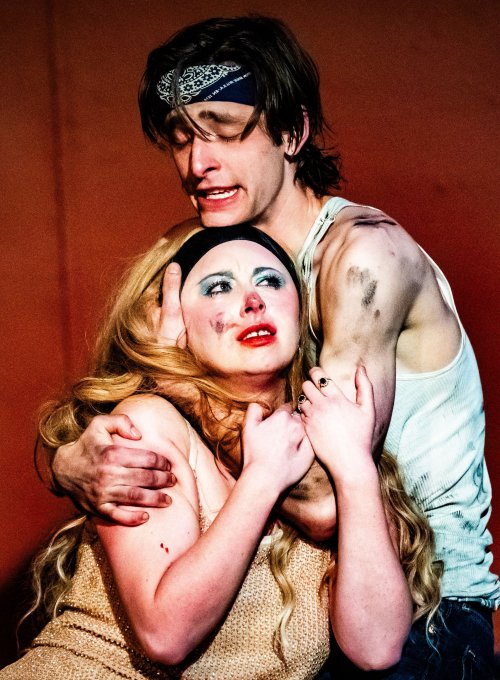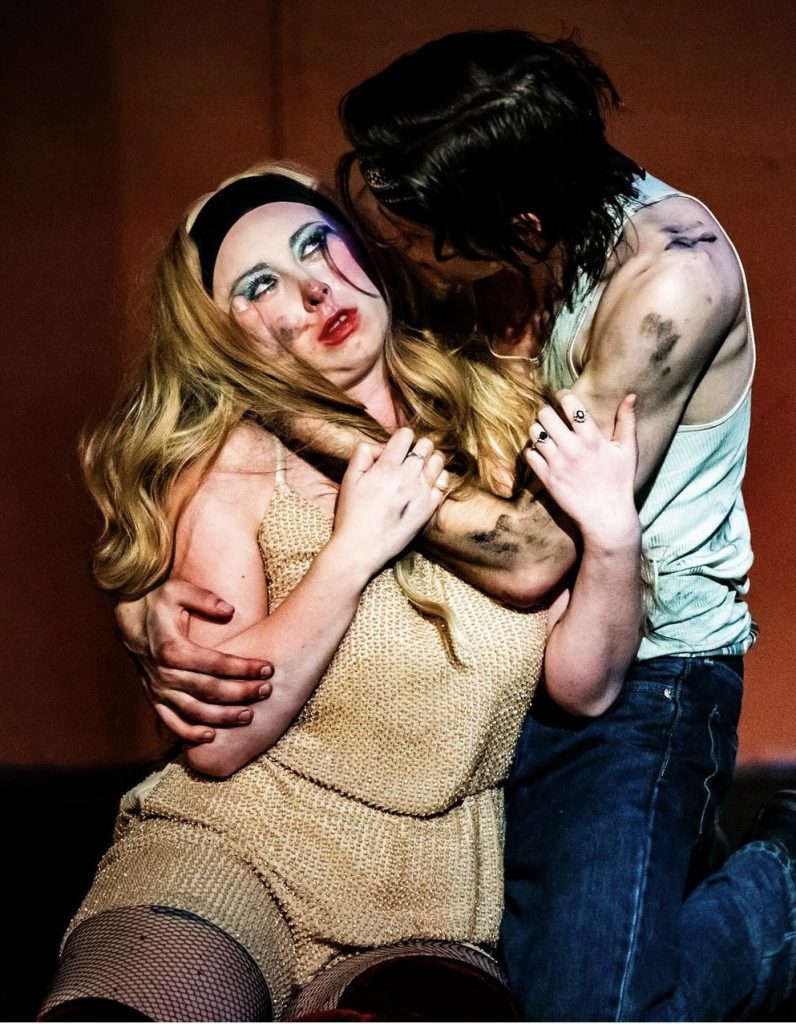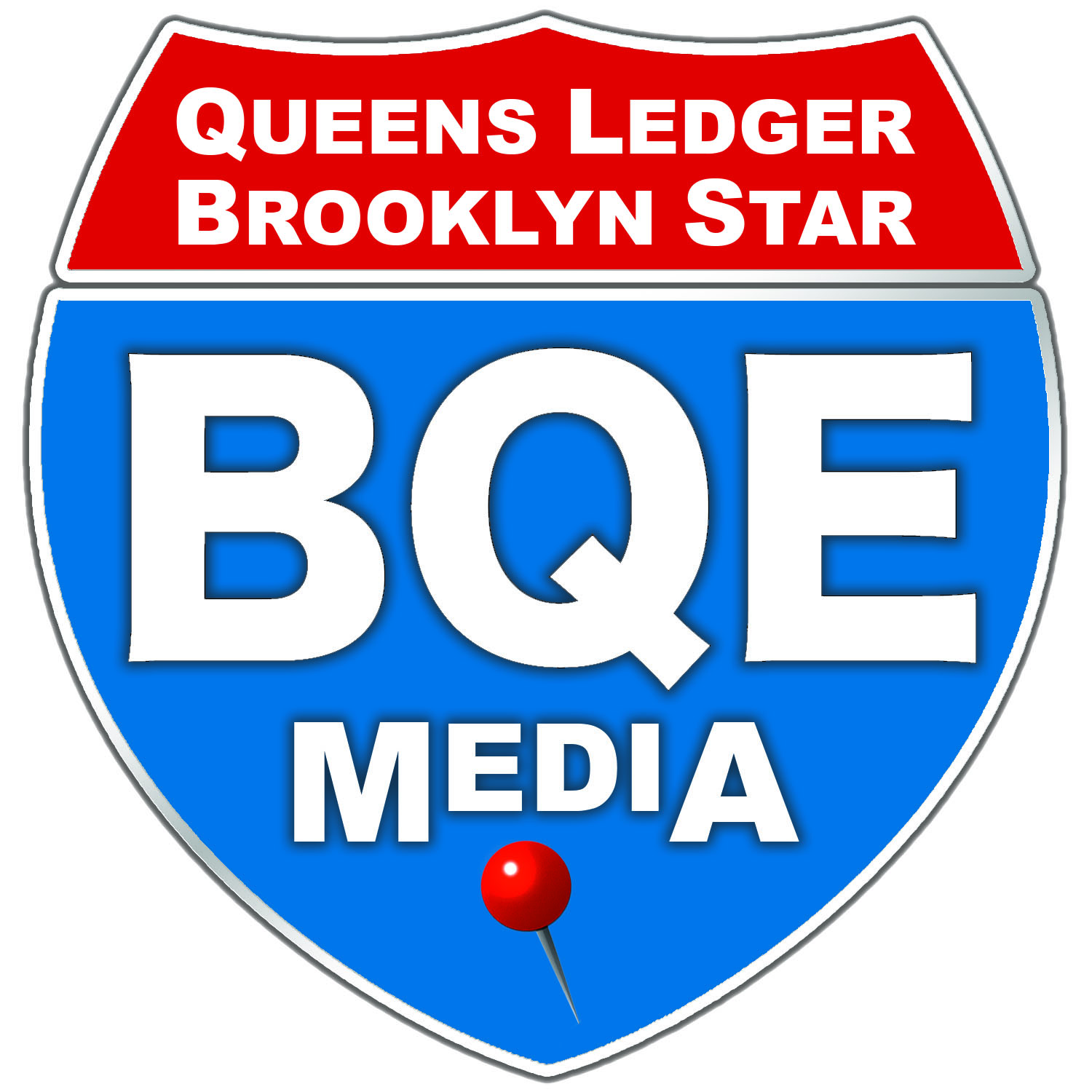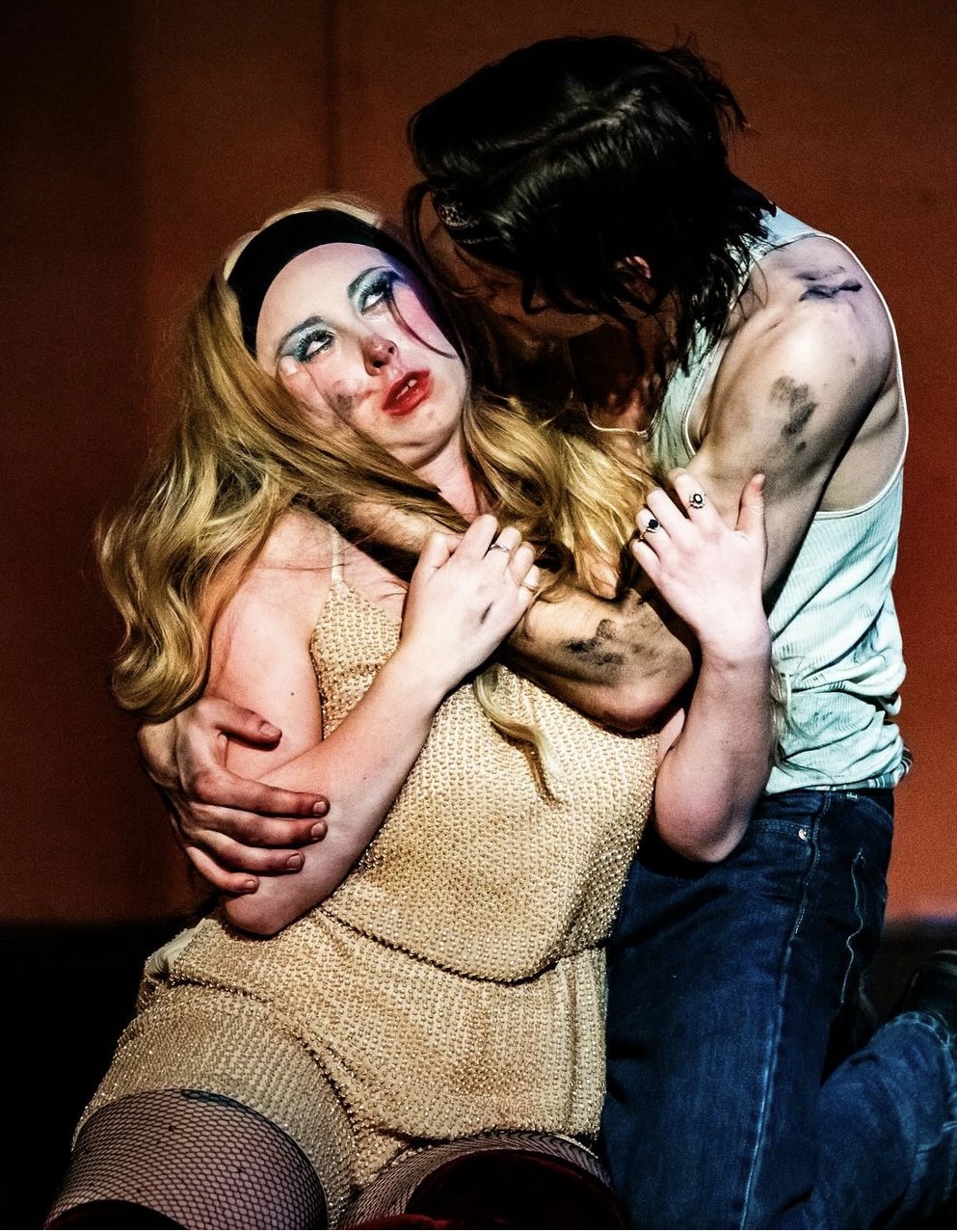
Courtesy Niko Stycos
Ciara McGovern
Long gone are the bell-bottom pants, prominent discotheques and slum-like living of the broken metropolis that was New York City in 1971. But ever-present is the opioid epidemic, public discourse of gendered bathrooms and misunderstanding of drug abusers in 2025 New York. Richard Vetere’s writing of Williamsburg in the 70s utterly captures the essence of the phrase “Before New York was safe” – whilst reminding us that these humane issues still stand tall today. Black & White City Blues tells the story of a group of peers wrestling their heroin addiction, succumbing to the citywide heroin epidemic of the late 20th century. The storyline simultaneously peers the window of those who don’t use but are heartbreakingly affected by their loved ones’ abuse of the drug. “Everyone who uses … eventually deals” The story, whilst devastating, successfully integrates comedy via timely comments & colloquial humour.
The intimacy of The American Theatre of Actors stage allows the audience to surrender to the fourth wall & delve into the emotive dialogue and actions made by the characters on stage. The set is split in 4, showcasing the most frequented locations of the ‘junkies’ day to day lives. The dull orange walls are complemented by the barron set dressing, reflecting both the internal mental conflict of the characters at present and the external decay of the city. One wall is ornamented with a neon glowing BAR sign, which stays solely alight between set changes, leaving the audience nowhere else to set their eyes.
The 90-minute one-act play is centered around Little Guy, remarkably played by Joshua Monseur. Following the tragic death of his brother while they were both “bagged up”, Little Guy decides that it’s time to get clean. This time will be different and he will finally see through his dream of travelling to the unspoken points of the United States. Little Guy carries a map of the US throughout the play. The map is often placed in his pocket, but at times during the play, it’s lost. It’s nearby but not on his person, it’s so close but not quite his. Quite like his fantasy of getting straight.

The term “straight” is used peculiarly on this stage. These users view the straight world as mortals compared to their sky-high escapades. They have contradicting views on what’s important in life, or more relevant, what’s not important. “I’m dead, thank God” – this is quite evident as we learn that these characters don’t worry about the typical fears in life, like death and rock bottom – in fact, they welcome them. Gary E. Vincent charmingly plays Bernice, who is a redeeming addition to the tale, lending a conscience for Little Guy – someone who doesn’t so much as have a fictitious angel nor devil on his shoulders.
Amber Brookes who marvellously plays Delilah, Little Guy’s girlfriend, also directed the production. She, along with Assistant Director Dustin Pazar, finely illustrates how these ‘junkies’ are sick and how none of them actively chose to be here. “I’m not a junkie, I’m a loser who does heroin”. There are no good characters, no evil characters, but all involved are slaves to the looming threat that is addiction; whether that be heroin, greed, or love – in 1971 or even in today’s world. Highs come, highs go, but the ever-glowing neon BAR signs of New York City are forever.
Black & White City Blues has been received positively by all who spectated. So much so that The American Theatre of Actors has extended its run, dating February 5th-9th. Congratulations to all the cast & crew on such a memorable production.




